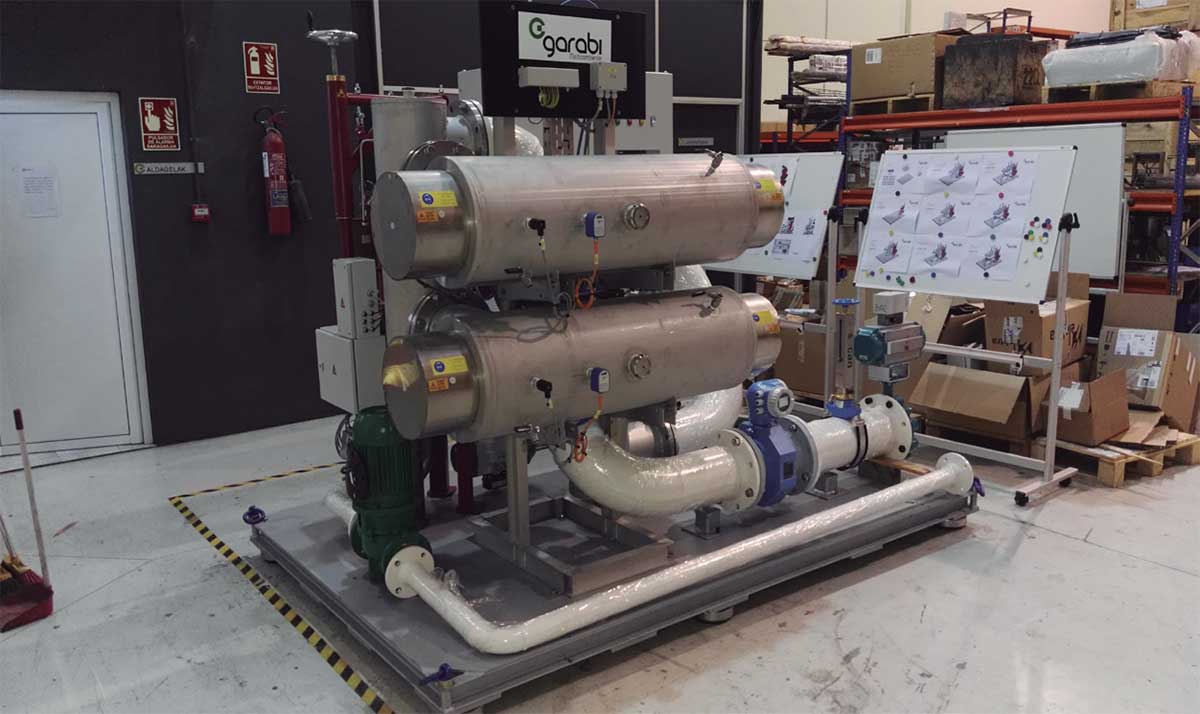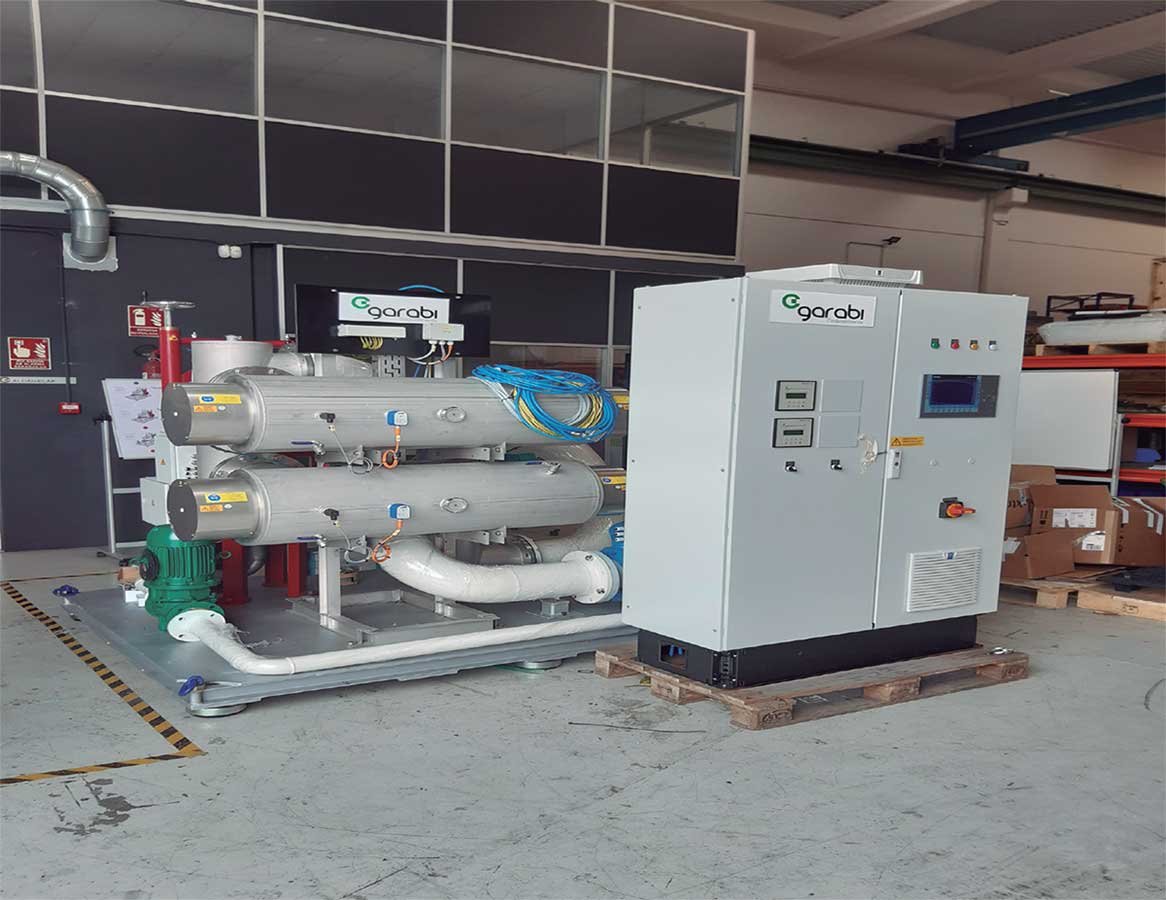BUAP II
BALLAST WATER TREATMENT PROTOTYPE ELIGIBLE FOR ACCREDITATION
IMPLEMENTING BALLAST WATER TREATMENT SYSTEMS (BWTS) on ships is an obligation imposed by international maritime authorities as of September 2024, with the aim of preventing unintentional spread of so-called invasive species that occurs when ballast water is discharged in different and remote waters. This is damaging for the environment, poses a risk to human beings and entails significant repair costs. GARABI, a business group specialised in developing and implementing industrial technologies, has recently led the BUAP project, which entailed the eco-design of BWTS equipment eligible for Environmental Product Declaration (EPD) certification. For BUAP II, GARABI has collaborated with NAVIERA MURUETA, as activity and business partner, and the BASQUE MARITIME FORUM for the promotion and dissemination of the project in the sector.

DRIVING FACTOR


 OBJECTIVES
OBJECTIVES
- Turn GARABI into a recognised BWTS manufacturer with type accreditation, introducing the company in the naval sector in a new but absolutely necessary niche in forthcoming years.
- Apply technologies verified with shipyards and shipping companies (UV, advanced oxidation, filtration, automation and remote control, etc.) in the prototypes developed to implement BWTS solutions that do not involve major adaptations to the vessel.
- Start the project business development, which, once launched, will have to cover around 200 BWTS installations within the next 5 years at national level alone, with an investment of more than €30 million.
 RESULTS
RESULTS
- Eco-design of a range of BWTS equipment which is compliant with stringent treatment requirements and with the possibility of operating in global waters.
- Operational modularity of equipment according to the quality characteristics of the water to be treated.
- Physical modularity (sizing and positioning of reactors and filter).
- Remote Access, Servitisation and Preventive Maintenance.
- 25% reduction in equipment sizing.
- 10% reduction in operating costs.
- Up to 50% reduction in maintenance requirements.
- 30% reduction in environmental impact.
- Improved price competitiveness.
 CONCLUSIONS
CONCLUSIONS
- The shipping industry has not made a definite decision regarding the demand for BWTS, which goes from disbelief of the final applicability of regulations, the demand for quality products, to the demand for facilities that simply comply with the law.
- Only 8% of existing merchant ships have a BWTS installed. The market is expected to grow rapidly at a compound annual growth rate of 37% over the period 2019-2025, reaching $172.5bn by 2025. Ferries and general cargo vessels have the lowest implementation rate (only 1- 2% have installed a BWTS). On the other hand, countries with more owned ships (e.g., Greece or Norway) have aboveaverage implementation ratios of up to 17%.
- Approximately 30 companies are developing BWTS with filtration and UV technology. Most of them are companies which have been in operation for over 10 years, are part of large groups, have track records and are positioned in other areas of the marine business.
- The accreditation of new BWTS equipment for the shipbuilding sector is a hard barrier to entry into the industry. Accreditation and approval activities for this type of equipment have a financial and time-frame impact that is not matched with the assessments of the activities to be carried out, nor is it explained by the levels of responsibility required.
ENVIRONMENTAL
TECHNICAL
ECONOMIC
COMMERCIAL
ON THE MARKET



